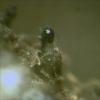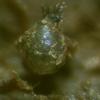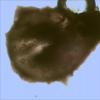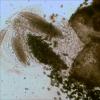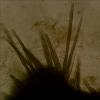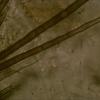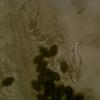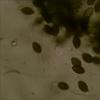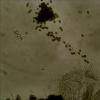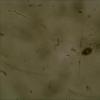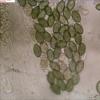
23-11-2025 11:16
Bohan JiaHi, I found small discs growing on dead stem of

21-11-2025 10:56
 Christopher Engelhardt
Christopher Engelhardt
Very small (~0,5 mm) white ascos, found yesterday

21-11-2025 11:52
Jean-Luc RangerBonjour à tous, on voit toujours 2 espèces areni

14-11-2025 16:26
 Marian Jagers
Marian Jagers
Hello everyone, On dead wood of Cytisus scoparius

17-11-2025 21:46
Philippe PELLICIERBonjour,Récolté sur bois pourrissant de feuillu

Found on cow dung.
Perithecium embedded in the dung whereby only the neck is sticking out. Neck is covered with straight hairs short at the top 130-159 um and longer at the base 500-600 um, both with a width of 4.5-5.5 um, thickwalled 0.9-1.2 um, 5-6 septa hairs constricted but not at the septa.
Asci: Only one mature ascus found containing 512 spores 470x160 um with a short stalk. It is difficult to find an ascus still containing spores because most of the time they collaps and counting the spores will be impossible.
Spores: 18.5-21.5x11.5-13 um, pedicel 13-15x4.5-5.5 um, upper cauda and lower cauda present.
The number of spores are counted by pressing the ascus and spreading the spores, the software is adding a dot and a number to each spore this way counting a great amount of spores is possible (foto-12) and then it's just a matter of counting the end numbers of each overvieuw
The cauda seems to consist of two lashes see foto-8 whereby the end of two lashes is visible by the cauda connected to the pedicel.
When pressing the deck glass caudas becomes extremely long foto-11
Also by pressing the ascus it looks as if the spores are connected to each other by a string when forced out of the ascus. (foto-10)


